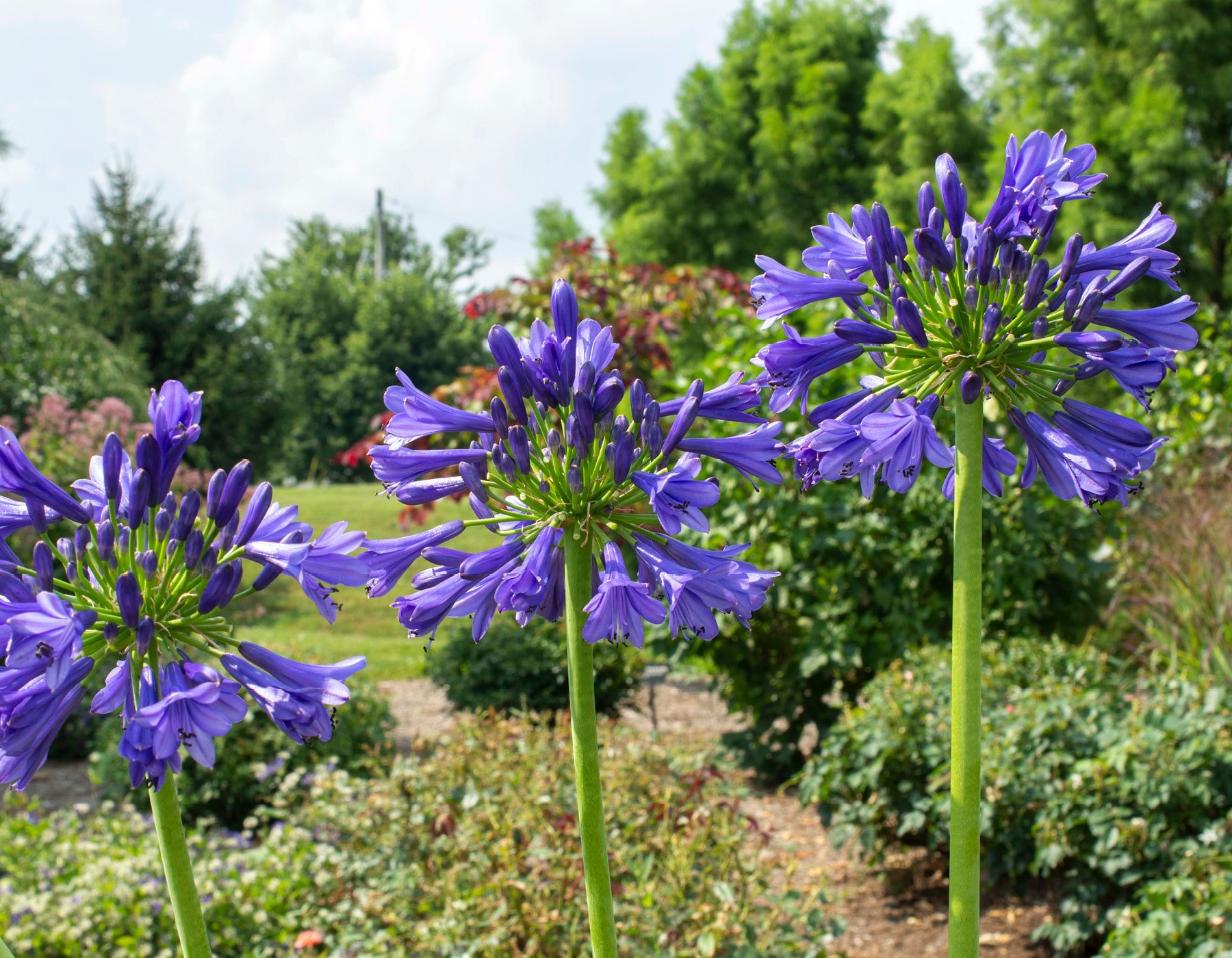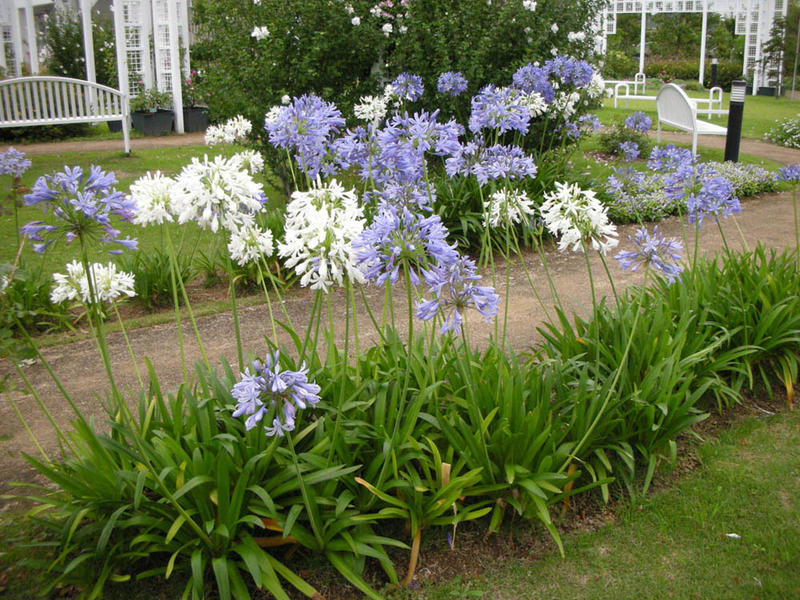Unleashing the Secret to Effective Agapanthus Growing: Idea for a Flourishing Yard
In the realm of gardening, growing agapanthus successfully requires a strategic approach that incorporates different facets of plant treatment. With cautious focus to detail, one can unlock the secrets to supporting these magnificent blooms, causing a yard that flourishes with beauty and vibrancy. By comprehending the subtleties of agapanthus farming, one can create an environment where these plants flourish and bloom abundantly. In the adhering to discussion, we will certainly explore necessary ideas and techniques that will certainly direct you towards a thriving agapanthus garden, supplying understandings into best practices, dirt conditions, watering strategies, and a lot more.
Growing Agapanthus: Best Practices
When growing Agapanthus, appropriate soil prep work is essential for making sure successful development and advancement of these beautiful blossoms. Agapanthus, typically called Lily of the Nile or African lily, grows in well-draining dirt with a slightly acidic to neutral pH degree - Agapanthus. Prior to planting, it is crucial to change heavy clay soils with raw material such as garden compost or peat moss to improve water drainage and offer crucial nutrients for the plants
To grow Agapanthus, select an area that gets complete sunlight to partial shade, as this will certainly advertise healthy development and abundant flowering. Dig an opening two times the diameter of the plant's root round and place the Agapanthus at the exact same deepness it was previously growing. Delicately backfill the hole with soil, pushing down strongly to get rid of any air pockets around the roots.
Water the recently grown Agapanthus thoroughly and proceed to keep the soil uniformly wet, especially during the plant's energetic expanding season. Agapanthus. Applying a balanced fertilizer once a month can even more sustain the plant's development and blooming. By adhering to these best methods for planting Agapanthus, you can produce a sensational display of these exciting blossoms in your yard
Suitable Dirt Issues for Agapanthus
For optimum development and growing success of Agapanthus plants, making certain the dirt conditions are optimal is important. Agapanthus favors dirt that is rich in nutrients, so incorporating a well balanced plant food during the expanding period can advertise healthy and balanced growth and dynamic blossoms.

Watering and Fertilizing Tips
To guarantee healthy and balanced growth and dynamic blooms, appropriate watering and feeding methods are essential for effective Agapanthus farming. Agapanthus plants benefit from regular watering, especially throughout the growing season.
When it concerns fertilizing Agapanthus, a well balanced fertilizer with equivalent parts nitrogen, phosphorus, and potassium can be applied in the spring to advertise healthy and balanced growth and flowering. Slow-release plant foods are suitable for supplying nutrients slowly over an extensive duration. Prevent over-fertilizing, as this can lead to too much foliage growth at the expenditure of flowers.
Furthermore, incorporating natural issue like compost into the dirt can boost nutrient degrees and improve soil framework, helping in the overall wellness of the Agapanthus plants. By complying visit this page with these watering and feeding tips, garden enthusiasts can ensure their Agapanthus plants prosper and produce spectacular displays of blossoms.
Trimming and Deadheading Methods
Appropriate trimming and deadheading techniques play a crucial duty in maintaining the wellness and looks of Agapanthus plants, complementing the crucial methods of watering and feeding for effective cultivation. Pruning Agapanthus includes getting rid of spent blossom heads, yellowing or dead fallen leaves, and total shaping of the plant to advertise far better growth. Deadheading, the procedure of getting rid of faded blossoms, not only boosts the plant's look but also encourages further growing.
When deadheading Agapanthus, it is recommended to clip off the blossom stem at the base using sharp, tidy shears. This procedure reroutes the plant's power from seed manufacturing back into root and foliage development, promoting a healthier and more robust plant. Routine deadheading can prolong the growing duration of Agapanthus and protect against self-seeding, which can bring about overcrowding.
In terms of pruning, Agapanthus normally advantages from a light trim after blooming to clean up the plant and encourage fresh growth. Reducing the spent blossom stems and removing any dead or damaged foliage helps maintain the plant's vigor and total look. Nonetheless, it is necessary to stay clear of reducing right into the crown of the plant, as this can compromise its health and wellness.

Protecting Agapanthus From Vermins and Diseases
Applying efficient insect and disease monitoring techniques is crucial to guarding the health and wellness and vitality of Agapanthus plants in farming. Agapanthus are normally hardy plants, yet they can still succumb numerous insects and illness Going Here if not correctly cared for. One usual insect that impacts Agapanthus is the Agapanthus borer, a caterpillar that passages into the plant, creating damages to the fallen leaves and flowers. To avoid problems, regular examination of the plants is essential. If borers are identified, they can be manually gotten rid of, or insecticidal soap can be utilized as a control measure.
In addition to parasites, Agapanthus are at risk to diseases such as root rot and fungal leaf places. By staying alert and dealing with insect and illness problems without delay, garden enthusiasts can assist their Agapanthus thrive and flourish.

Conclusion
Finally, successful useful reference cultivation of agapanthus requires correct planting methods, perfect dirt conditions, appropriate watering and feeding, routine pruning and deadheading, and security from illness and insects. By adhering to these techniques and tips, garden enthusiasts can ensure a prospering yard loaded with stunning agapanthus blossoms. Agapanthus. Remember to preserve consistent care and interest to detail to promote the wellness and longevity of these spectacular plants
When growing Agapanthus, appropriate dirt prep work is vital for guaranteeing successful growth and advancement of these lovely flowers.Water the recently grown Agapanthus extensively and proceed to maintain the soil evenly moist, especially during the plant's energetic growing season.For ideal growth and blooming success of Agapanthus plants, ensuring the dirt problems are suitable is crucial. When transplanting or planting Agapanthus, make sure the soil is well-prepared to offer the essential structure for the plants to develop themselves efficiently. One typical bug that influences Agapanthus is the Agapanthus borer, a caterpillar that passages into the plant, creating damage to the blossoms and fallen leaves.